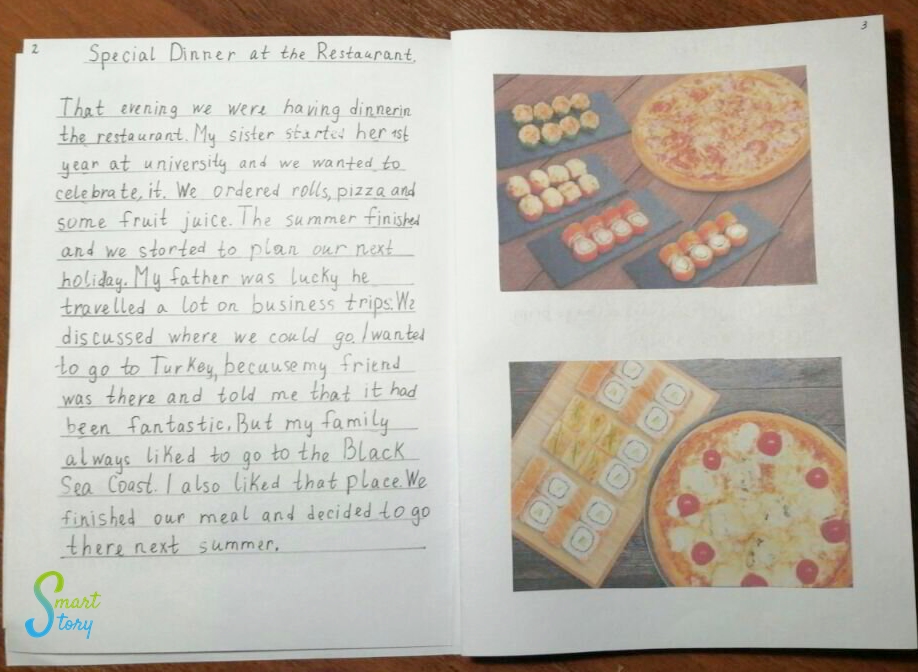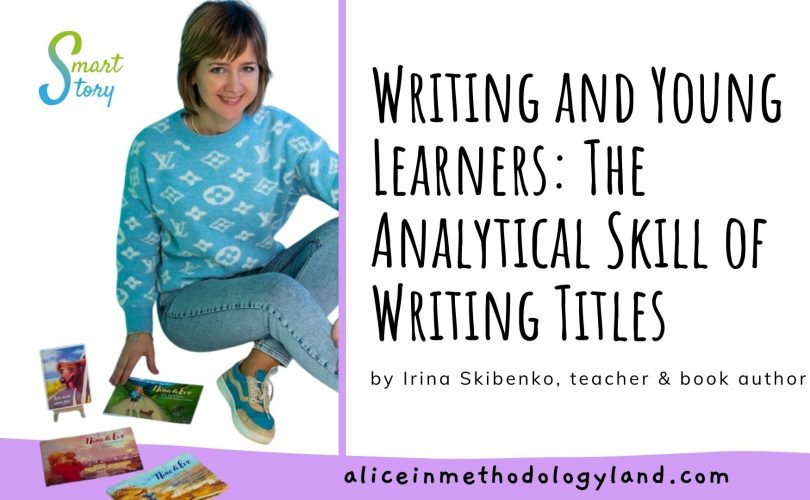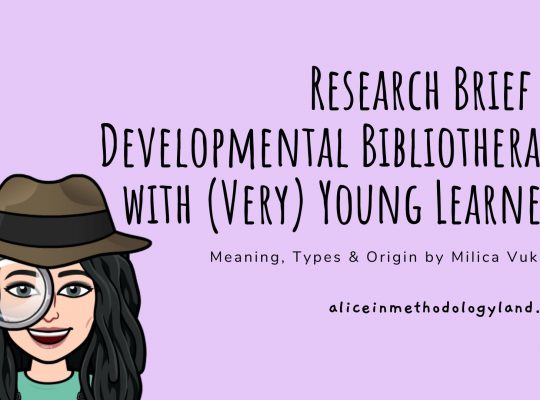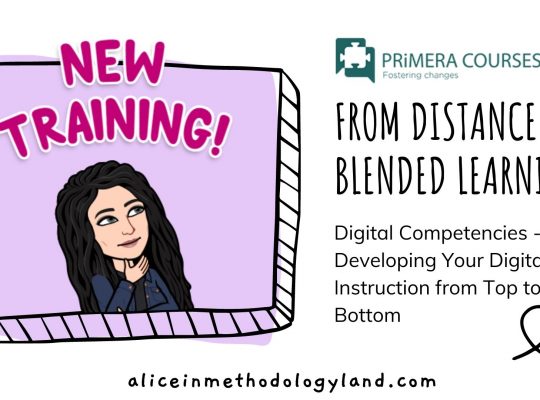Hello, my dear educators! Our guest writer for this month is Irina Skibenko, an experienced ESL teacher and book author for children at Smart Story Club. This short article will share some of her insights about analytical skills when it comes to writing titles in her program Young Author Experience, which will also start on Alice in Methodologyland in August 2022 – a free 3-hour writing program for children!
How can you introduce children to the story-writing process?
At the start of the course, we create a storyboard of children’s future stories. It’s a wonderful tool to plan any project and visualize how it should be developed. We plan our chapters with short descriptions of what will happen there. These are not the names of the chapters yet. When children have already written a full chapter or all chapters they need to come up with a name for it, as well as the name for the book.
At this point in the program, we don’t try to create suspense, but simply learn to reflect on the gist of the chapter.
Kate’s Analytical Skill
My student Kate wrote in her 1st chapter how she and her family had dinner at the restaurant. They were celebrating her sister’s 1st year at a university. Guess how she named it at first? It was named ”Suchi and Pizza”!
“Is your chapter 1 the description of your dinner?” I asked.
“No, it’s how we had dinner in the restaurant?” Kate told me.
“Do you always have dinner in the restaurant? Or you came there for a special occasion?” I continued guiding her.
“Yes, we celebrated my sister’s start of the university,” she replied.
She started to realize what name would have been better and came to “Special Dinner at the Restaurant” It does reflect what it’s about now. Don’t you agree with me? In the same way, we changed the following title of the chapter – “Antaliya” to “My Friend’s Story”.
Kate was going to name her book “A Trip to Turkey”, but again it wasn’t about how she went there and spent her time. In her story she writes how she was dreaming about it, asking her mum to go there and, finally, the circumstances worked out for them to go… In the end, she called her story “My Dream to Go to Turkey” which much better reflects the main idea.

Who is Bert?
Bert is my student’s dog and often children are excited to create stories about their pets, just as I did with Nina and Eve’s stories. It helps them to relax and express their love for animals without realizing that they learn English while writing and reading about animals.
Another student called her story “Bert in the Forest” at first, but actually, her story was about how they had lost their dog while walking in the forest and then had found him. Another aspect of the story was missing here. Later, she changed it into “Where is Bert?” which sounds more intriguing and tells us more about what it’s going to be about.
To conclude
I remember that I was struggling with creating plans for the material that we were covering at school. It deals with the same analytical skills when you need to be able to see the gist of the whole book, article, or even one paragraph. Nowadays, it’s vital as every day we are bombarded with huge amounts of information. More than that, it is a crucial skill that each student can see or express the gist of a written text during their studies and career.
What do you think about Irina’s experience? Let us know how can you help your students nurture this essential life skill in the comments below.
About Irina

“I love working with children and empowering them to become Global Citizens through sparking their interest in reading and exploring the world, finding their own voice, guiding and boosting their imagination, writing their unique stories, and connecting them to each other, as well as their parents.”
Irina is an English teacher for children from Ukraine, with over 17 years of teaching experience. She is the founder of the Smart Story Club website, focusing on helping children develop their writing skills through online courses. She is a book author for children with 3 published books under her belt.






